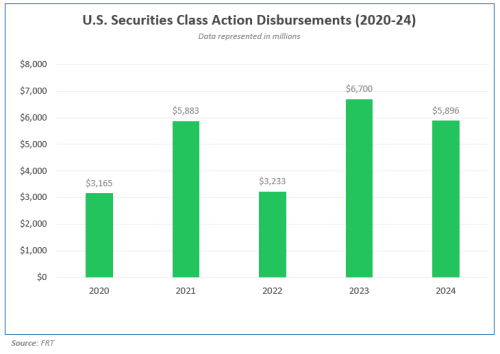[Report] Shareholder Class Actions are Changing in 2025 – Here’s Why
Filing complete and accurate class action claims has never been simple, but today it’s more complicated than ever. Institutional investors face a growing list of recovery challenges that even five years ago were less pronounced or did not exist.
That’s the overarching conclusion investors can draw from FRT’s 2025 Securities Class Action Intelligence Report, which analyzes the many hundreds of shareholder class actions filed, settled, or disbursed from 2020-24. Our briefing covers several emerging trends and opportunities that we hope investors can use to make more informed filing decisions and, ultimately, futureproof their recovery programs. For example:

- U.S. Class Actions: We have seen more frequent auditing of high-value claims and scrutiny of supporting documentation as settlement administrators prioritize fraud prevention
- SEC Fair Funds: Participation requirements continue to evolve as the agency plans to enforce documentation standards more consistently
- Antitrust: Rate-fixing cases resulted in two of last year’s largest investor payouts overall
- Global: Litigation funders are coalescing around key jurisdictions as securities laws further develop
Despite these changes, billions of settlement dollars still pass through the courts annually. Investors recouped more than $7 billion from shareholder recoveries in 2024, spanning all major case types. New filings and settlements held steady in core U.S. securities class actions, which disbursed $5.8 billion last year, while antitrust cases produced two of the year’s largest distributions overall.
These figures reinforce the importance of shareholder recovery programs as a source of fund revenue. They also underscore the financial and reputational stakes of missed or incomplete filings. Investors who adapt their class action programs to the changing landscape will be best positioned to capitalize on a wider range of recovery opportunities and generate more operational alpha.
We encourage you to read our findings for a closer look at how class actions are changing, what’s next, and how your firm can prepare for the future.




